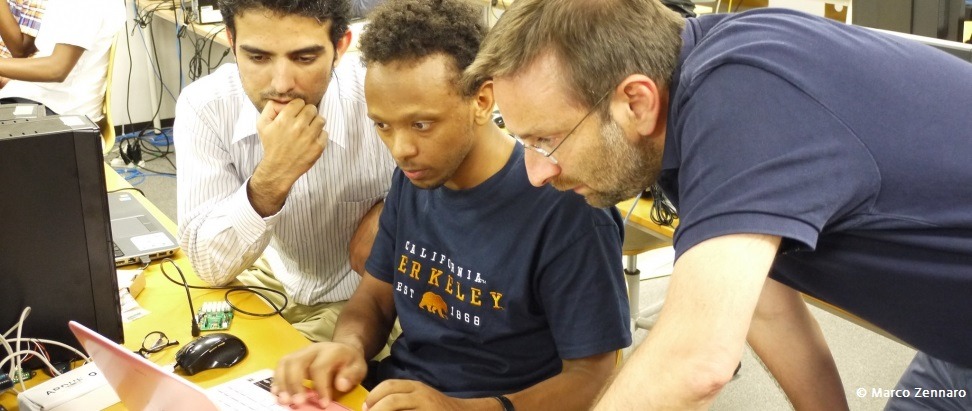About twenty years ago, people here at the International Centre for Theoretical Physics (ICTP) in Trieste, Italy started thinking about what happens to the people who come here after they go home. Specifically, what happens to the academics and researchers from the developing world who come to work with us.
At the time, they’d come, work with us, do some amazing things, and then go back to places where they didn’t have the Internet. With no Internet, it was very hard for them to do research. They cannot download papers, they cannot contact colleagues. So, we started teaching people about internet technologies, and, at that time, we already had the vision that wireless is much cheaper and much quicker to deploy than fibre, or copper or anything else. We started teaching people about wireless and WiFi when it wasn’t even called WiFi.
We did the first link in Nigeria, at Obafemi Awolowo University in Ife-Ife. That was one of the first WiFi links, or proto-WiFi links, on the whole continent. From there, more and more people got in touch with us and started asking for training.
An interesting thing happens when you create a long-distance wireless Internet connection to somewhere, which is that you also make it possible to bring the Internet to other, nearby places, as well. A few years ago, we worked on connecting hospitals in Malawi. At one of the hospitals, there was a girls’ school nearby, and they said ‘Oh, we’d love to be on the Internet, why don’t you connect us?’ Then there was a boys’ school further up the road that said ‘Oh, we want to get the Internet as well.’ And then once the Internet is in the schools, you can do some clever stuff like giving communities access to the bandwidth at night. There is no one in the school at night, so that bandwidth is going to be wasted. Why can’t we give that to communities or public parks, or you know, telecentres or whatever, in the evening?
One of the things we’re working with a lot right now is TV white space. In most of the world, they only have two or three TV channels, so all the rest of that broadcast spectrum is going unused. So, in Malawi, we started measuring TV white space, producing maps, and the local university went to the regulator with the maps that we produced together, and they said ‘Look, we’re only using two channels out of a hundred, can we please use some of that spectrum to connect schools and hospitals?’ So, the government of course could only say yes. We had one pilot project, then another other pilot project, and that’s the story of how the TV white space started.
There are advantages and disadvantages to using TV white space for the Internet. The disadvantages are that the equipment is much more expensive, because it is not a standard yet, antennas are really, really huge — they’re basically TV antennas — and the throughput is lower, so it’s not as fast. The huge advantage for us, though, is that the penetration is much better. It can go through walls much more easily. It can go through vegetation. In many of these countries, when it rains, you don’t get WiFi on the university campuses, because trees are wet, and the signal doesn’t pass through wet leaves. It can also cover huge distances, and by using high-powered radios, we could limit the number of access points.
Malawi gave our local partners a license to use TV white space for one year, and then that worked, so now they extended it for a second year. Now, Malawi is going to become the first country in Africa to regulate TV white space. If an ISP wants to use TV white space to provide internet to their customers, they can do it. Now, that’s having a snowball effect, so we helped launch a similar project in Mozambique last year, near Maputo. This year we’re going to go into three other places to connect about 10 schools. What we’re trying to do there is to kind of extend the network, not only to TV white space sites, but then to have some MESH networks to connect communities.
The ICTP is a bit different from some organizations, because if you ask us what difference our work makes on the ground, we don’t always know. We partner with local Universities and train people here, and then they go home and create networks. They see the changes, and they evolve their projects as they see fit. And that’s a great thing, they already know what they need.
Note about the Internet Society and its support for Community Networks
The Internet Society is dedicated to helping the unconnected connect. We do this through funds provided by our Global Engagement team and through our grants programme called Beyond the Net. We are keen supporter of ICTP’s. Their team will be working with us to help train more community networks in Africa on radio frequency and spectrum basics.
This article is part of a series on Community Networks.

